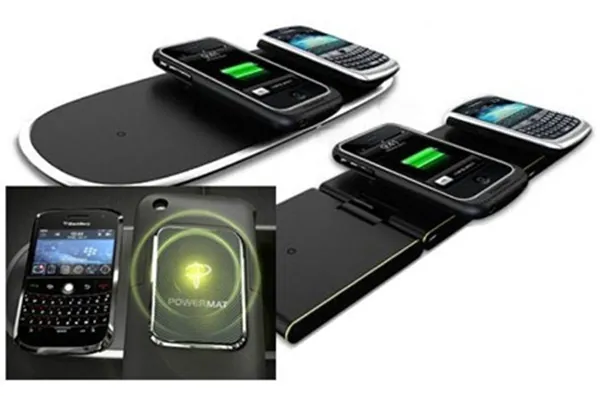Wireless Battery Charger

In the future all electronic devices will be wirelessly powered. Small, battery-powered gadgets make powerful computing portable.
The battery charger should be capable of charging the most common battery types found in portable devices today. In addition, the charging should be controlled from the base station and a bidirectional communication system between the pickups and base station should be developed.
Inductive Power Systems:
Inductive Power Transfer (IPT) refers to the concept of transferring electrical power between two isolated circuits across an air gap. While based on the work and concepts developed by pioneers such as Faraday and Ampere, it is only recently that IPT has been developed into working systems.
Essentially, an IPT system can be divided into two parts;
● Primary and
● Secondary.
The primary side of the system is made up of a resonant power supply and a coil. This power supply produces a high frequency sinusoidal current in the coil. The secondary side (or ‘pickup’) has a smaller coil, and a converter to produce a DC voltage.

Working of Inductive Power Transfer:
In this system communications signals are encoded onto the waveform that provides power to the air gap. Communication from the primary side to the secondary is implemented by switching the power signal at the output of the resonant converter between its normal level and a lower level which is detectable by the pickup but still provides enough power to control the pickup microcontroller. This process is called Amplitude Shift Keying (ASK). This is achieved by varying the output voltage of the buck converter which provides an input DC voltage to the resonant converter.

Communication from the secondary to the primary is achieved by a process called Load Shift Keying (LSK). This involves varying the loading on the pickup. Any load on the pickup will reflect a voltage on the primary circuit proportional to the load. Therefore a variation in the load on the pickup can be detected by the charging station.
The communications system must provide two discrete levels of voltage reflected onto the primary side, to represent the on and off states for digital communications. The difference must be easily detected on the primary side to provide a robust communications channel. Signals are decoded by simple filters and comparators which feed a digital signal to the microcontrollers.
Advantages:

IPT has a number of advantages over other power transfer methods – it is unaffected by dirt, dust, water, or chemicals. In situations such as coal mining IPT prevents sparks and other hazards. As the coupling is magnetic, there is no risk of electrocution even when used in high power systems. This makes IPT very suitable for transport systems where vehicles follow a fixed track, such as in factory materials handling.